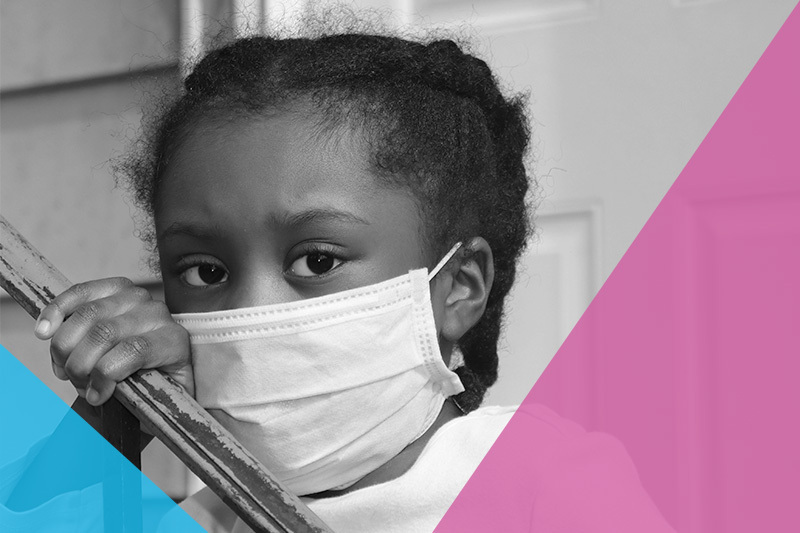Addressing racial and ethnic health disparities within primary care

The COVID-19 pandemic has led to increased awareness of existing racial and ethnic health disparities and inequities. The team at the Boston Children’s Hospital Primary Care Center serves a large population of Black and Latino children and recognizes that adults in these groups are at much higher risk of contracting — and dying from — the novel coronavirus than their white counterparts. And while the data suggests that children generally have lower rates of infection, it is clear that many who receive care through this center will experience the social and economic consequences of the current situation, points out pediatrician Snehal Shah, MD, MPH.
COVID’s impact on vulnerable populations
“Job losses are higher in communities of color, resulting in loss of much-needed income and putting families at high risk for food insecurity, housing instability, and inability to meet other basic needs,” Shah says. “In addition, many parents work in essential jobs and families live in situations where it is difficult to quarantine, ultimately increasing the risk of becoming sick or infecting others,” she adds. All of this has prompted Shah and her colleagues in primary care to take steps to try to address the inequities that exist for the children we serve.
Addressing racism
“At Boston Children’s, we treat health needs like asthma but we also focus on addressing health-related social needs for patients, as well as social determinants of health in communities,” explains Shari Nethersole, MD, executive director for community health.The latter are conditions in a person’s environment that affect their health status.“The COVID-19 crisis, along with the increased racial tension all across the country, has called attention to the need to address the structural racism in policies and practices that exist and that create barriers to accessing care and opportunities for Black and Latino families,” she adds.
Building on relationships
With so many children’s quality of life, well-being, and futures at stake, primary care is building on the strong relationships we have developed with our patients over the years to make sure they have access to needed health care and essential resources, says Kathleen Conroy, MD, MS, clinical co-chief at Boston Children’s Hospital Primary Care Center. She points out that all of the center’s staff — from clinicians, nurses, and social workers to staff at the front desk — strive to establish a deep sense of trust with families that allows them to share their needs and concerns without feeling judged.
Supporting patients
Here are some of the specific ways Boston Children’s is building on those relationships now to try support children and families. Other clinicians can implement similar efforts to support their own vulnerable populations.
- “We screen all of our patients to understand their current living conditions and challenges so we can determine how best to help them with any struggles they are facing,” says Sally Cheek, the center’s social work manager. This can provide a true picture of what stresses families are experiencing.
- “We have a vibrant social work team, as well as patient navigators and resource specialists, all of whom work with local organizations to help families meet their pressing needs,” says Cheek. For instance, the primary care social work team provides grocery store gift cards to families to help address food insecurity, says Anu Vyavaharkar, a clinical social worker at the primary care center. In addition, the primary care center, along with Boston Children’s Accountable Care organization, plans to launch a partnership with Daily Table, a nonprofit grocer that provides healthy food and prepared meals on a budget. They also hope to offer Lyft rides to transport families to shop.
- Primary care physicians make a point of asking families if they need help paying for medication co-pays, rent, food, and utilities. We send them to community resources or directly provide support to help meet pressing needs, says Vyavaharkar. Cheek adds that another way primary care meets these needs is by providing clothing, air conditioners, and assistance with rent and with housing conditions, as well as by providing mental health support to very stressed parents and children.
- The center gives masks and gloves to patients and families so they can follow the latest safety guidelines while in public.
- “We are running a virtual group for social workers and navigators from the various health center partners to share information and resources for patients and families,” says Stacy Walker, director of community health planning and engagementat Boston Children’s. This includes online yoga classes and cooking classes that teach families how to shop for nutritious food on a budget and prepare healthful dishes.
Recognizing strengths
Beyond these steps, it’s also important for primary care clinicians to recognize the strengths of every family — even in the face of so many challenges — and to remind families that they are doing a great job in a difficult situation, says Shah. “I am always impressed by the resiliency so many parents and caregivers demonstrate even in the midst of great adversity, and the great work they do to take care of their families regardless of what they may be facing,” she says.
Learn more about our response to COVID-19 and access a list of community resources.
Related Posts :
-

Model enables study of age-specific responses to COVID mRNA vaccines in a dish
mRNA vaccines clearly saved lives during the COVID-19 pandemic, but several studies suggest that older people had a somewhat reduced ...
-

Making pediatric health equity research truly equitable: An EDI review process
A burgeoning number of studies are examining pediatric health equity, diversity, and inclusion (EDI). But if not done right, health ...
-

EarlyBird: Addressing dyslexia through game play
Up to 10 percent of the population has dyslexia, yet many children are diagnosed only after struggling with reading for years. ...
-

New insight into the effects of PPIs in children
Proton-pump inhibitors (PPIs) are frequently prescribed to suppress stomach acid in patients with gastroesophageal reflux disease (GERD). Prescribing rates of ...





